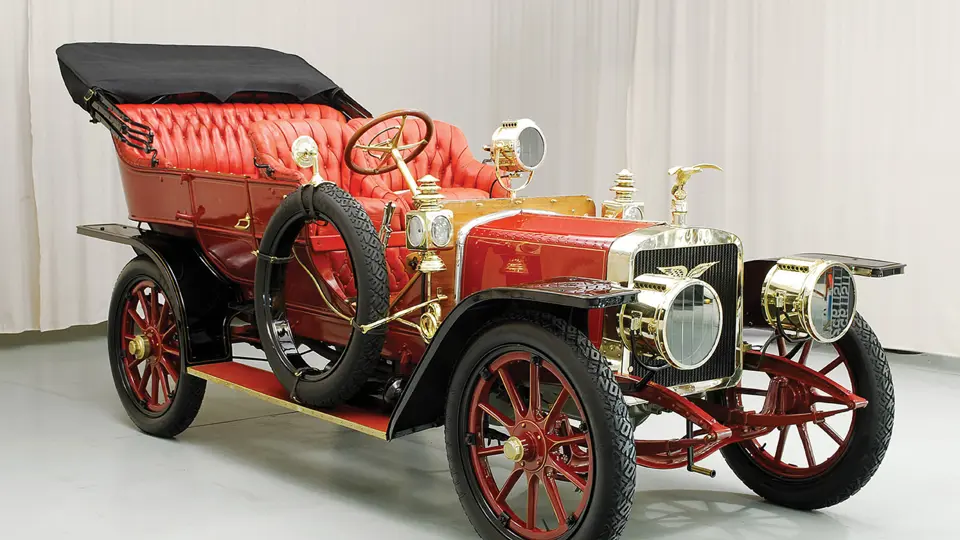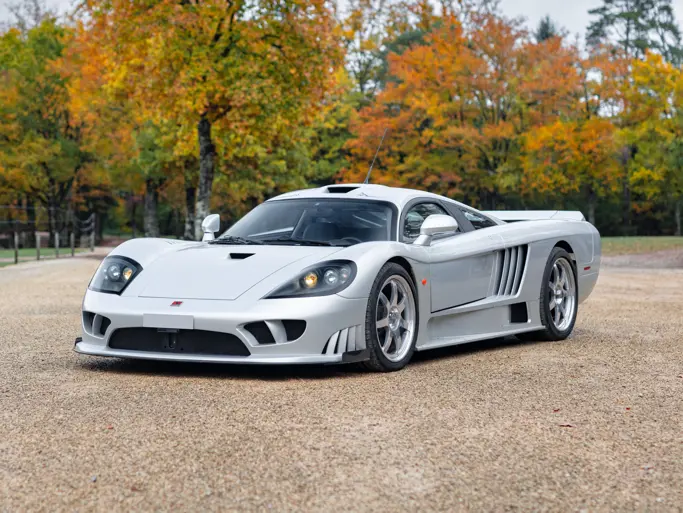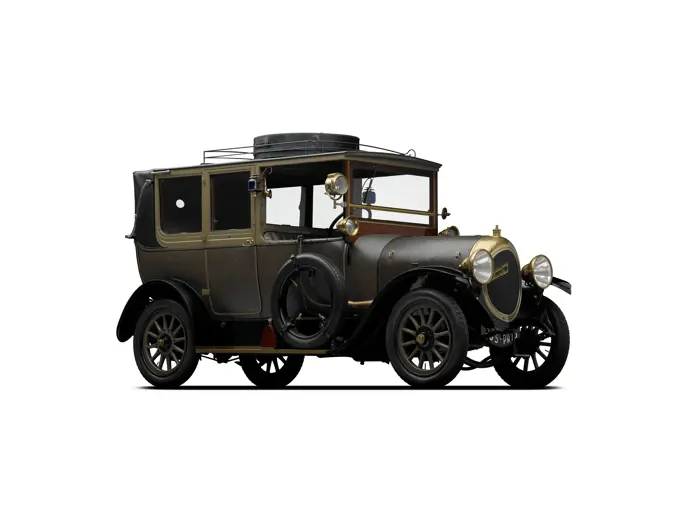The 1906 American Tourist was the first production automobile designed by Harry C. Stutz. Its Stutz-designed side-valve four-cylinder 336 cubic inch engine broke no new ground, but equally showed Stutz's appreciation for the desirable attributes of touring car engines, in this case a practical operating range of 125- to 1,450-rpm. Live axle suspension with semi-elliptical leaf springs and platform rear suspension with a semi-elliptical cross spring were characteristic of the highest quality automobiles of the day.
Harry Stutz's Tourist showed its value, quality and practicality by earning its place in the American model lineup from its inception in 1906 until 1913, just a year before American ceased production in 1914. The Stutz-designed four-cylinder engine powered all automobiles built by American Motor Cars until 1913. American built some 45,000 automobiles in just 9 years, double the production of Packards in the same period.
This 1906 American Tourist Roi des Belges Touring was restored years ago for one of the founders of car collecting in America, Dr. Samuel Scher. It is one of very few surviving examples of its model, a nearly unique example of an important milestone in both the evolution of the American automobile and in the development of Harry Stutz's experience and his concepts of automobile design.
Finished in red with black mudguards, it has red leather upholstery and a black cloth top. The American eagle mascot spreads its wings proudly on the radiator cap. There are Rushmore acetylene headlights, Gray & Davis kerosene sidelights, a magnificent Rushmore swivel-mounted acetylene searchlight on the cowl, Stewart speedometer and a brass bulb horn. The thoroughness of its restoration and the care it's had in the last two generations are reflected in the set of side curtains that still accompany it. One of the great automobiles of early American history, it will still show its heels to traffic with style and panache that is almost unknown today.



 | Fort Lauderdale, Florida
| Fort Lauderdale, Florida


